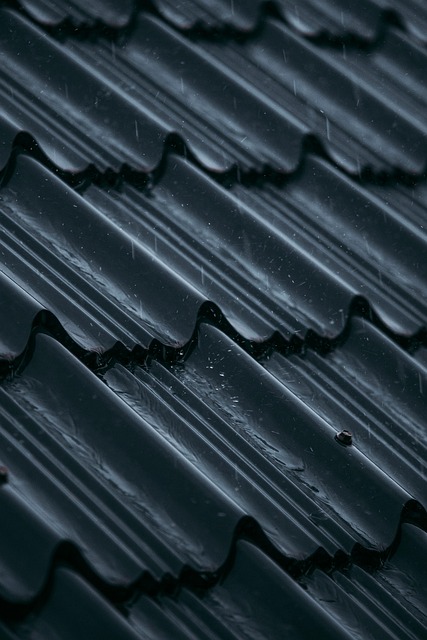Commercial luxury roofing enhances building aesthetics with multi-tiered and curved rooflines, offering structural versatility, creative design possibilities, and improved space utilisation. While these designs pose engineering challenges related to weight distribution, water runoff, and wind loads, architects leverage them to create dramatic skylines, play with light, and make buildings stand out. Meticulous planning, high-quality materials, professional installation, and regular maintenance ensure the structural integrity and longevity of commercial luxury roofing systems.
“Elevate your space with dramatic multi-tiered or curved rooflines—a design trend transforming the skyline of modern architecture. This article delves into the art of crafting luxurious commercial roofing that captivates the eye. From structural integrity to aesthetic appeal, we explore design considerations, engineering challenges, and best practices for installation and maintenance. Discover how these unique rooflines enhance building aesthetics while ensuring durability in the commercial luxury roofing market.”
Understanding Multi-Tiered and Curved Rooflines
Multi-tiered and curved rooflines are architectural elements that can significantly enhance the aesthetic appeal of a building, especially in the context of commercial luxury roofing. These designs offer more than just visual interest; they provide structural versatility and can optimise space utilisation. For commercial spaces aiming to make a statement, a multi-tiered roofline can create a dramatic first impression. Each tier allows for creative play with materials, colours, and textures, adding depth and dimension to the facade.
In the realm of luxury roofing, curved lines offer an elegant and sophisticated alternative. They can be incorporated into designs to provide a sense of fluidity and movement, contrasting sharply with straight, angular structures. Curved rooflines are particularly effective in creating a unique and memorable silhouette, making a building stand out in its surroundings. This approach is not just visually stunning; it also allows for better rainwater management, as curved surfaces can be designed to channel water efficiently away from the structure.
Design Considerations for Commercial Luxury Roofing
When designing multi-tiered or curved rooflines for commercial luxury roofing, several key considerations come into play. The primary goal is to create a visually striking and architecturally harmonious structure that enhances the overall aesthetic appeal of the building. Incorporating complex rooflines demands careful planning to ensure structural integrity and functional efficiency. Materials used should be durable and able to withstand varying weather conditions while complementing the high-end finishes expected in luxury commercial spaces.
Esthetic considerations include aligning the design with the surrounding landscape or urban environment, ensuring the roofline blends seamlessly into the building’s overall design philosophy. Curved elements can add a sense of fluidity and elegance, while multi-tiered roofs can create depth and visual interest. Lighting strategies should also be integrated to highlight these dynamic features after dark, enhancing both the interior ambiance and exterior appeal of the property.
Structural Integrity and Engineering Challenges
Creating multi-tiered or curved rooflines for a dramatic effect in commercial luxury roofing presents unique structural integrity and engineering challenges. As designs deviate from traditional flat roofs, ensuring stability becomes paramount. Engineers must consider the additional stress on support structures, particularly with curved lines that can distribute weight unequally. Reinforcements like trusses or steel beams might be required to withstand wind loads and dead weights, especially at the transition points between different roof tiers.
Moreover, water runoff dynamics change significantly with curved surfaces. Proper drainage systems become crucial to prevent water accumulation and potential structural damage. Engineers must design sloped roof surfaces that direct water away from the building while accounting for ice buildup in colder climates. These considerations demand innovative solutions that balance aesthetics with functionality, pushing the boundaries of what’s achievable in commercial luxury roofing.
Aesthetic Appeal: Creating a Dramatic Effect
In the realm of commercial luxury roofing, architects and designers increasingly embrace multi-tiered or curved rooflines to elevate buildings from mere structures to artistic statements. This design choice isn’t just about aesthetics; it’s a powerful tool for creating dramatic effects that capture the eye and evoke a sense of wonder. Curved roofs, whether gracefully sloping or sharply angled, disrupt the traditional linearity of flat roofs, adding a dynamic element that can make a building stand out in a crowded skyline.
The aesthetic appeal of these curved designs extends beyond their visual impact. They offer a unique opportunity to play with light and shadow, creating depth and dimension that enriches the overall look of the structure. For commercial spaces aiming to attract attention or residential properties seeking a touch of opulence, multi-tiered or curved rooflines can be the game-changer, transforming simple buildings into striking landmarks in their respective areas.
Installation and Maintenance Best Practices
Creating multi-tiered or curved rooflines for a dramatic effect in commercial luxury roofing involves careful installation and ongoing maintenance to ensure structural integrity and aesthetic appeal. During installation, it’s crucial to use high-quality materials that can withstand the unique stresses of these complex designs. Professional roofing experts should meticulously plan each phase, from measuring and prototyping to final assembly, to guarantee precise fit and seamless transitions between different roofline segments.
Regular maintenance is equally vital for preserving the beauty and functionality of multi-tiered or curved roofs. This includes routine inspections to identify leaks, damaged shingles or flashing, and other potential issues early on. Timely repairs, re-sealing, and replacement of worn components are essential practices that extend the lifespan of commercial luxury roofing systems. Proper drainage and ventilation should also be maintained to prevent water buildup and related damage, ensuring the structural integrity of these striking rooflines for years to come.
In conclusion, multi-tiered and curved rooflines offer a dramatic aesthetic for commercial luxury roofing. By carefully considering design, structural integrity, and maintenance practices, these innovative roof designs can enhance any property’s allure while standing the test of time. Incorporating such features not only elevates the visual appeal but also opens up new possibilities for modern architecture, ensuring that your building stands out in today’s competitive market.
